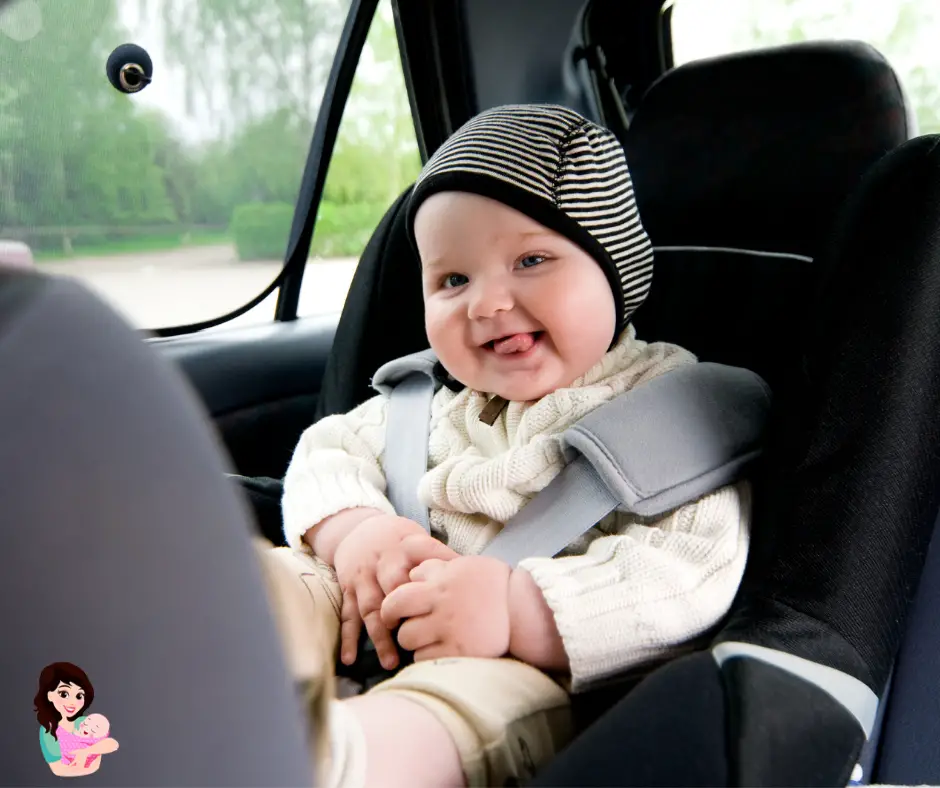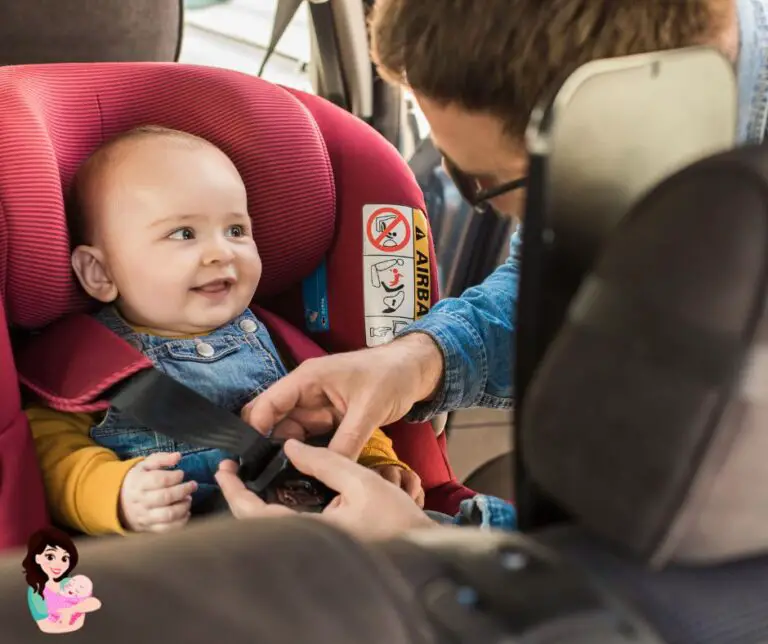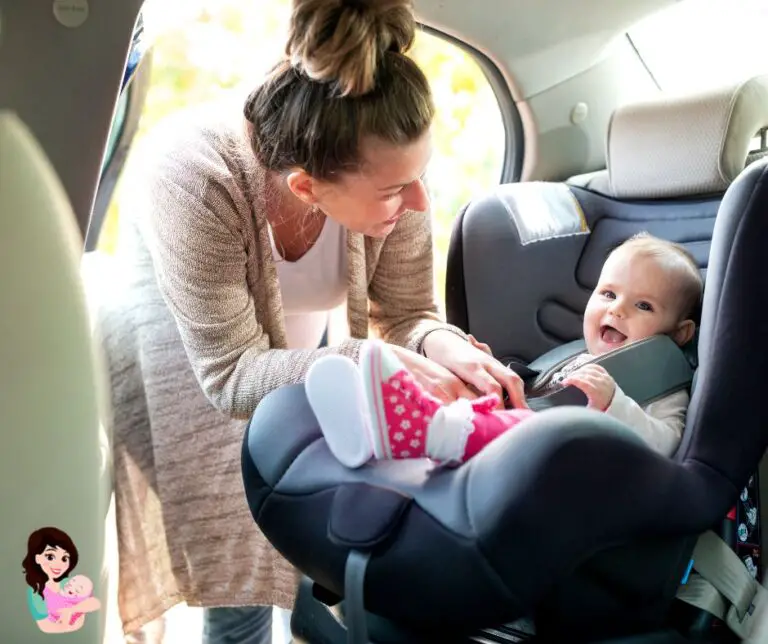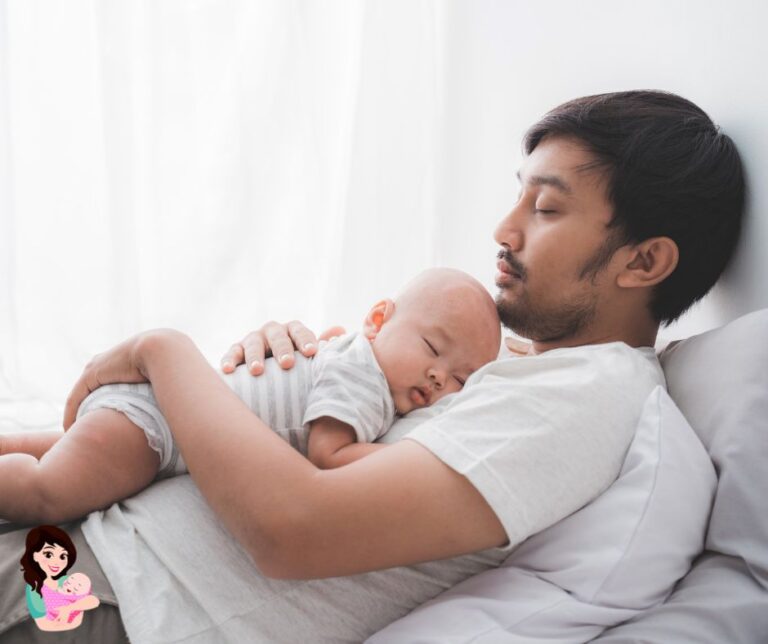
Babies are so fun to watch. They’re always moving, exploring, and doing things that will make you laugh. But do you know how long babies should face the rear in car seats? Many factors determine how long a baby should sit in a rear-facing car seat. This article explains why it is important for your child to stay rear-facing for as long as possible and how long babies should sit in them.
Facing rear-ward is the safest way for a child to travel in a car. The benefits of keeping your baby rear-facing are well documented; however, some parents still need to put their baby in a rear-facing seat for as long as possible. In this article, I’m going to answer many parents’ questions: How long should a baby sit in the rear-facing car seat?
The American Academy of Pediatrics (AAP) recommends that children remain in rear-facing car seats as long as possible until they are at least two years old or until they reach the maximum height and weight limit of their convertible seat.
What Are the Benefits of Rear-facing Car Seats?
Here are some of the reasons why you should keep your child in a rear-facing car seat as long as possible:
1. It protects your baby in any situation
The seat shell and headrest of a rear-facing seat serve as a protective shell for the child’s most delicate body parts in frontal impacts, which are the most frequent form of collision and a leading cause of catastrophic injuries. Furthermore, practically all rear-facing child car seats come with a 5-point harness, lowering the possibility that the child would escape the belt after a collision and get injuries that could be fatal.
When a child is in a rear-facing child safety seat, the seat shell’s protection is always present to keep them safe no matter how fast the car moves, how severe an accident might be, or a violent braking technique.
2. It is beneficial in terms of side impacts
Rear-facing car seats provide the most protection in all collisions, not just frontal ones. Compared to forward-facing seats, they show advantages in side impacts, which are the second most frequent cause of fatalities or serious injuries in auto accidents. In contrast to crash tests, most side hits in real life occur at an angle between front and side-on rather than at 90 degrees from the side (3 or 9 o’clock).
Additionally, a motorist automatically stops when they anticipate a side impact (even if it’s only out of the corner of their eye), which causes the youngster to be pushed into the safety of a rear-facing child seat. When braking, a child in a forward-facing seat would be somewhat pushed out of the seat, making them more vulnerable to side forces.
3. It provides comfort for your baby
Being restrained by a 5-point harness ensures that the youngster will sit comfortably from the start and that nothing will obstruct their arm movement.
Where a child’s legs should grow when they mature worries many parents but be mindful that kids enjoy sitting with their legs in various positions and are far more flexible than most adults; they can sit with their legs crossed next to the child car seat, or against the backrest when they are in a rear-facing car seat, to name just a few options.
Younger children’s legs won’t yet reach the vehicle floor in a forward-facing child car seat; thus, they won’t be supported in any manner. Long periods spent sitting with dangling legs are uncomfortable and hard on the knees. So it should be no surprise that youngsters facing forward frequently shove their feet on the back of the front seat, which can be very uncomfortable for the person seated there.
4. Easy to keep an eye on your baby
If you have the right accessories, it’s easier to have an eye on your rear-facing baby than on a forward-facing baby. The baby mirror on a rear-facing seat may be adjusted so that you always have a clear view of your baby. Not only will you make eye contact with your baby, but you’ll also be able to see the majority of their upper body. This will enable you to see what’s happening in the back without having to stoop over or turn your rearview mirror in the wrong direction.
When Can a Child Move To Forward-Facing Car Seat?
Forward-facing seats are designed for children who have outgrown their rear-facing seats and weigh at least 20 pounds but are under 40 pounds. Most children reach this milestone between 2 and 4 years old.
Ideally, children should stay in forward-facing seats until they are at least two years old or until they reach the maximum height and weight limits for those seats. Forward-facing seats distribute crash forces over the tops of their shoulders rather than over their heads or necks like rear-facing seats do.
Once your child has reached these minimums, he’s ready for his first car ride in a forward-facing seat. However, it’s important to keep him in this position for as long as possible; ideally until he’s four years old or weighs 40 pounds.
When your child has outgrown their forward-facing seat, it is time to move on to a booster seat. Booster seats use the vehicle’s seat belt system to secure them in place while riding in the front seat of your vehicle.
When Can My Child Use a Booster Seat?
Once your child has outgrown the forward-facing car seat with a harness (or convertible or combination car seat), you can transition her to a booster seat.
A booster seat raises the child to use the vehicle’s safety belts properly (with the lap belt low on the hips and the shoulder belt across the chest). Boosters usually have integrated armrests and high backs to support older children while they sit upright in the vehicle.
Conclusion
Although a wide variety of car seats are available on the market today, it is important to follow the guidelines set forth by your child’s pediatrician. They will be able to advise you on how long your child should face away from traffic and when it’s time for them to transition into a forward-facing seat or booster seat.
Hopefully, this article has helped you make an informed decision about how long to keep your child in a rear-facing car seat. It’s important to remember that safety is the most important factor when choosing what type of car seat is best for your baby.

Hi, This is Emma Baster; As a mom, I spend my free time caring for my kids. I’ve read a lot on the Internet to improve my childcare skill and bring the best to my kids. Eruditemommy shares my knowledge and experience through helpful posts. I hope you enjoy them!






